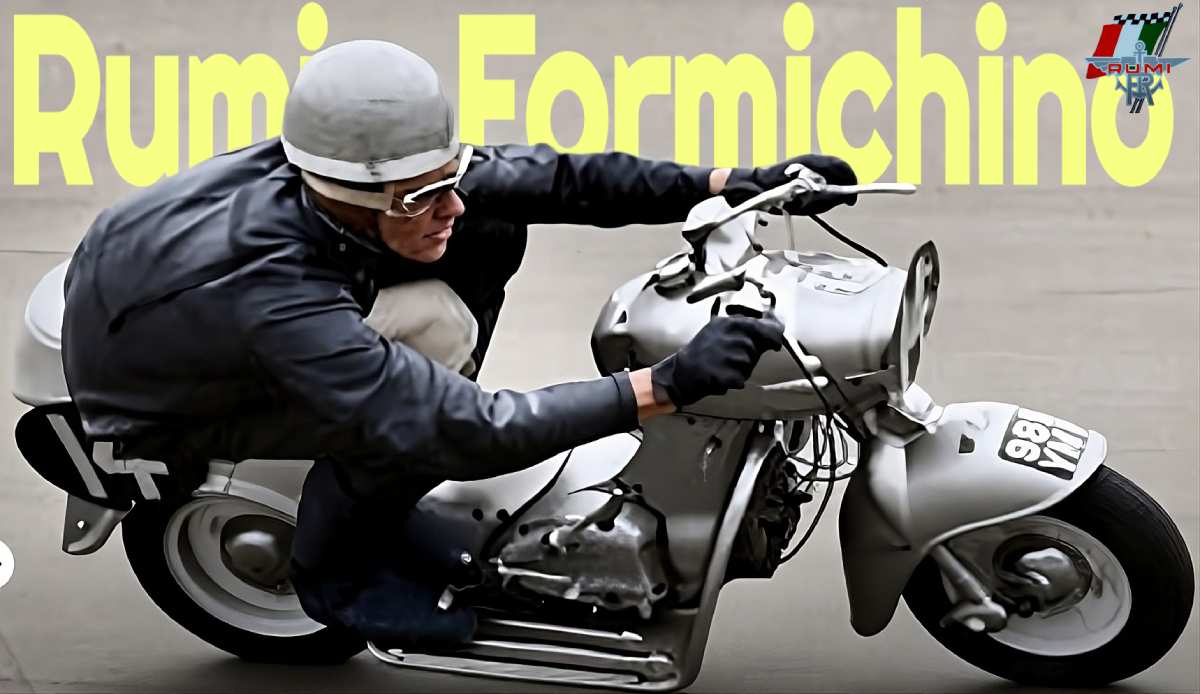- Posted on
- • Classic
Rising Value of Rumi Formichino Scooters – Collector’s Market Trends 2024
- Author
-
-

- User
- Torque
- Posts by this author
- Posts by this author
-

Rising Value of Rumi Formichino Scooters – A Collector’s Delight
If you’ve ever stumbled upon a Rumi Formichino at a classic scooter meet, you’ll know it’s not your run-of-the-mill two-wheeler. Small, quirky, and unmistakably Italian, these scooters have gone from being affordable city runabouts to high-value collector pieces. In recent years, their market price has been climbing steadily — and for good reason.
The Unique Story Behind Rumi Formichino Scooters (why Rumi Formichino is collectible)
Rumi wasn’t always in the scooter business. The company started as a wartime manufacturer of marine propellers and other precision metal parts. Post-WWII, founder Donnino Rumi shifted gears — quite literally — and began producing two-wheeled vehicles.
The Rumi Formichino, launched in the mid-1950s, stood out immediately. With its fiberglass body (rare at the time), art-like curves, and zippy two-stroke engine, it was more than transport. It was a style statement. People noticed them not just on the road, but parked outside cafés and shops.
Why the Value of Rumi Formichino Scooters Keeps Rising (vintage Rumi Formichino price trends)
Over the last decade, collectors have turned their eyes — and wallets — toward the Formichino. Here’s why prices are climbing:
- Rarity: Compared to Vespa or Lambretta, Rumi produced far fewer units. Surviving examples are scarce.
- Design Appeal: The styling blends art and engineering, making it a conversation piece even when it’s not running.
- Cult Status: It’s a niche brand. Owning one feels exclusive, almost like joining a private enthusiast’s club.
- Condition Gap: Many have been lost to time. Fully original or expertly restored examples command top prices.
Today, a clean, roadworthy Formichino can fetch five-figure sums, with concours-level examples pushing even higher.
What Makes Rumi Formichino Scooters So Collectible? (classic Italian scooters for collectors)
Part of the magic is emotional. Many buyers remember seeing one as a kid, or have a family connection to post-war Italy. Others are drawn to its blend of mid-century industrial design and simple, reliable mechanics.
For younger collectors, it’s the retro-cool factor. These scooters look as good in a living room or coffee shop as they do on the street. They’re conversation starters, Instagram darlings, and, for some, investment assets.
Tips for Buying and Investing in a Rumi Formichino (investing in classic scooters)
If you’re eyeing the market, here’s what to keep in mind:
- Be Patient: Good ones don’t come up often.
- Check Provenance: Look for documentation to verify originality.
- Budget for Restoration: Parts can be tricky to source, and bodywork requires skilled hands.
- Buy the Best You Can Afford: It’s cheaper than restoring a poor example.
With values trending upward, a well-bought Formichino can be both a pleasure to own and a potential long-term investment.
1. The Scoop on Vintage Rumi Formichino Specifications
Donnino Rumi’s artistic vision turned into mechanical wonder. The Formichino, introduced in 1954, featured:
- A lightweight cast-aluminum monocoque body, split into front and rear castings bolted to the engine Wikipedia Canadian Biker Magazine Wikipedia.
- A signature 125 cc horizontal parallel-twin two-stroke engine, conceived by Pietro Vassena, delivering around 6.5 HP, elevated to 8 HP in the Sport version Wikipedia Wikipedia Motorumi Official Formichino MCNews.
- Technical features include a single Dell’Orto downdraft carburetor, flywheel magneto ignition (30 W output), and a 4-speed gearbox South Bay Scooter Club Mecum Auctions.
2. Historic Market Performance: Auction Price Trends of Rumi Formichino
| Year / Instance | Sold Price | Notable Fact |
|---|---|---|
| 1955, Dorotheum (Austria) | €6,440 | Early record—well-documented piece Dorotheum Fahrzeuge |
| 1956, Bonhams | ~$4,600 (June 2025) | VIN-based valuation Hagerty |
| 1956, Barnebys | £6,900 (2020) | 38% above estimate Barnebys.co.uk |
| 1958, Barnebys | €5,980 (2018) | Sport version, no reserve price Barnebys.co.uk |
| Moto Rumi average | ~$17,350 | Across brands; highest sale $38K (Gobbetto), lowest Formichino $6,600 Classic.com |
✦ The trajectory shows consistent collector demand, especially for rare or well-restored models.
3. Why Rumi Formichino Scooters Continue to Increase in Value
- Uncommon craftsmanship – cast aluminum body, artful design, and mechanical integration that was ahead of its time Canadian Biker Magazine Lane Motor Museum.
- Scarcity and history – limited production run (1954–1960), post-war origin story with WWII manufacturing roots Wikipedia Wikipedia H&H Classics Canadian Biker Magazine.
- Racing pedigree – named Sport or Bol d’Or after endurance race victories, adding nostalgia and motorsport prestige Wikipedia Formichino Wikipedia.
- Emotional and aesthetic appeal – looks beautiful, rare, and feels like owning a piece of functional art.
4. Pros & Cons of Investing in a Rumi Formichino Scooter
| Pros | Cons |
|---|---|
| High desirability & rising auction values | Spare parts are rare—restoration can be costly |
| Distinctive design and collector appeal | Few models surface for sale—limited liquidity |
| Authenticity and provenance boost value | Documenting originality is crucial and sometimes tricky |
| Compact size, simple engineering | Historical models may require expert evaluation |
5. FAQs
- Q: What makes the Formichino so collectible?
A: It’s a blend of exquisite casting, rare design by a sculptor-founder, a mechanical layout that doubles as structure, and legacy in racing. - Q: What engine power does it offer?
A: 6.5 HP standard, 8 HP for Sport models—respectable for a 125 cc two-stroke of the era. - Q: How much can one cost today?
A: Depending on condition, auction sales range from ~$4,600 to over €6,400, with Moto Rumi average around $17,350.
Final Word
The rising value of Rumi Formichino scooters is no accident. They combine scarcity, design heritage, and cultural nostalgia — a trio that the collector market loves. Whether you’re chasing one for your garage or just admiring from afar, there’s no denying the little Italian ant’s place in scooter history.
